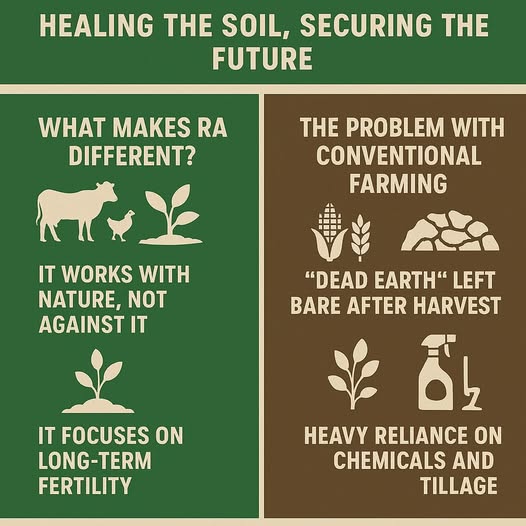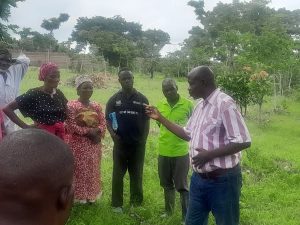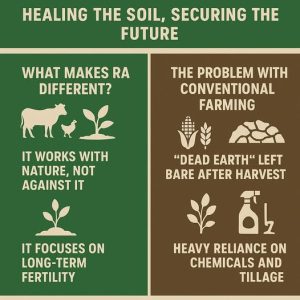The world is at a tipping point. Farmers everywhere are battling droughts, unpredictable rainfall, floods, and declining soil fertility. These challenges are not random – they are the direct result of how we have treated our soil over time.
Regenerative Agriculture (RA) is not just another farming trend. It’s not the same as organic farming, permaculture, or even sustainable farming. RA has one powerful focus: building and protecting soil health. Because when the soil is healthy, everything else thrives – crops, livestock, communities, and the climate.
—
What Makes RA Different?
It Works with Nature, Not Against it – Planned grazing by ruminants like cows, sheep, and goats naturally prunes plants for optimal growth and fertilizes the soil with manure.
It Brings Life Back to the Land –
Cover crops such as clover, vetch, and field peas capture nitrogen, store carbon, and protect the soil from erosion.
It Focuses on Long-Term fertility – Perennial plants like fruit trees and berry shrubs add organic matter, feeding the microbes that build rich, living soil.
—
The Problem with Conventional Farming:
Conventional agriculture prioritizes high-input annual crops like corn, soy, and wheat. These fast-growing crops strip the soil of nutrients and leave it bare after harvest, turning once-living soil into “dead earth.”
This leads to:
– Heavy dependence on chemical fertilizers and pesticides.
– Frequent tillage that dries out and damages the soil structure.
– Higher vulnerability to drought, flooding, and pests.
The result is a vicious cycle – weaker soils, declining yields, rising costs, and worsening climate impacts.
—
Why Should Farmers Care?
Because RA is not just about going “green.” It is about farming smarter, cutting costs, and building resilience. By regenerating the soil:
– Water stays in the ground longer, even during droughts.
– Fertility improves naturally, reducing chemical costs.
– Yields become more stable year after year.
– Farms become part of the climate solution by capturing carbon.
Healthy soil is the foundation of true food security. Regenerative Agriculture can help us face today’s global crises – from hunger to climate change – by restoring the land that feeds us.
—
Next in the Series:
In Episode 2, we will explore “Conventional Farming vs. Regenerative Agriculture – The Soil Story.” You will see how RA flips the script and why this shift is urgent for every farmer.
By Saidu Bako Halidu
Founder/CEO Rahama Green Acres – RGA





